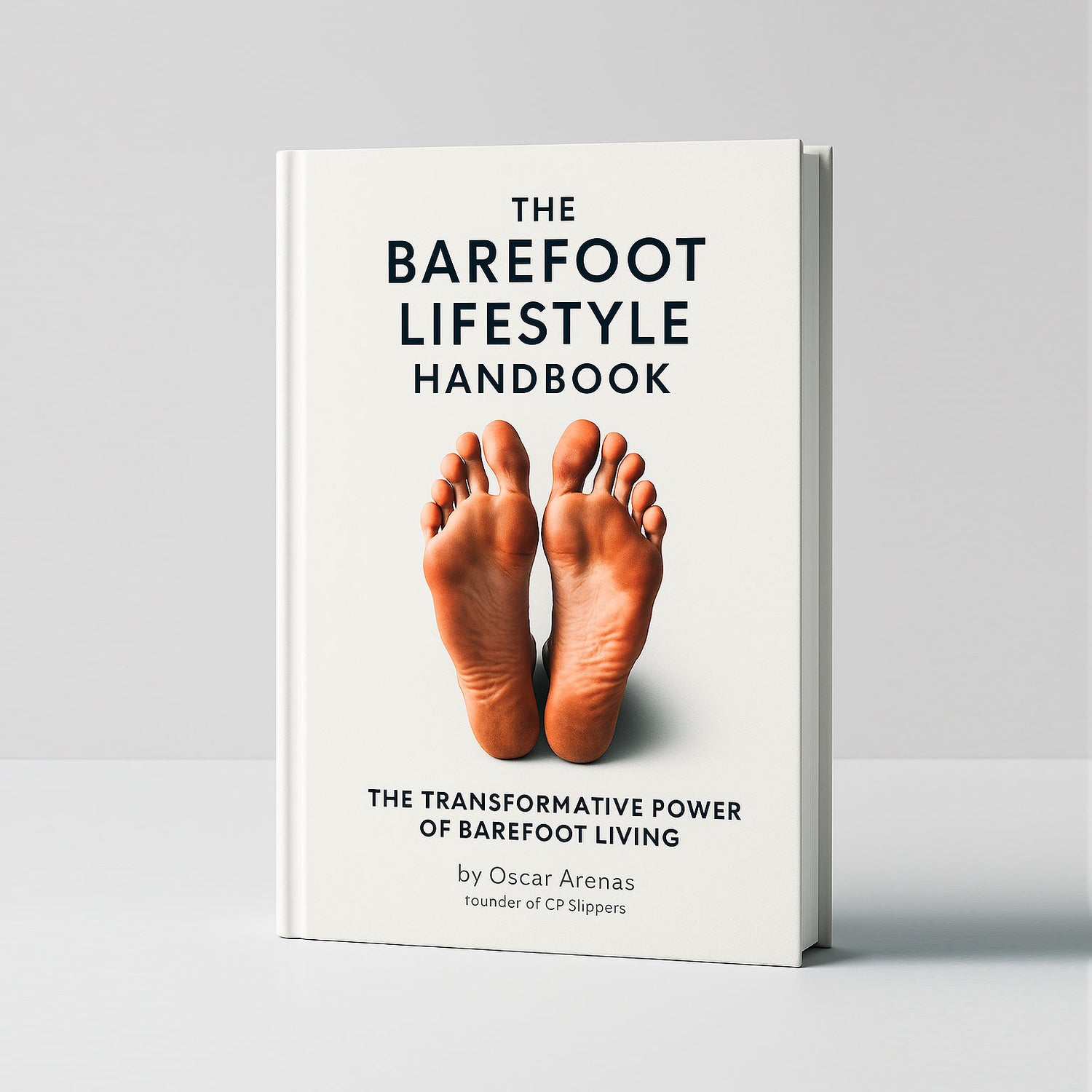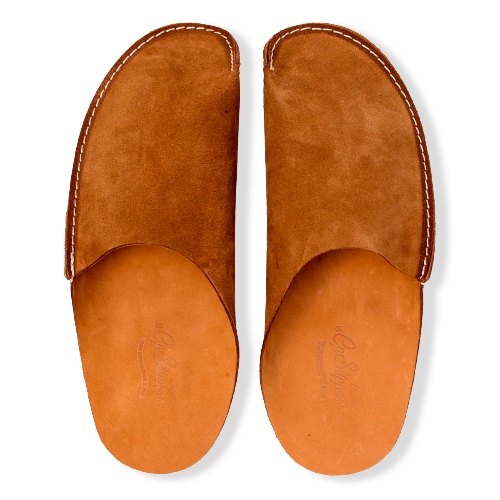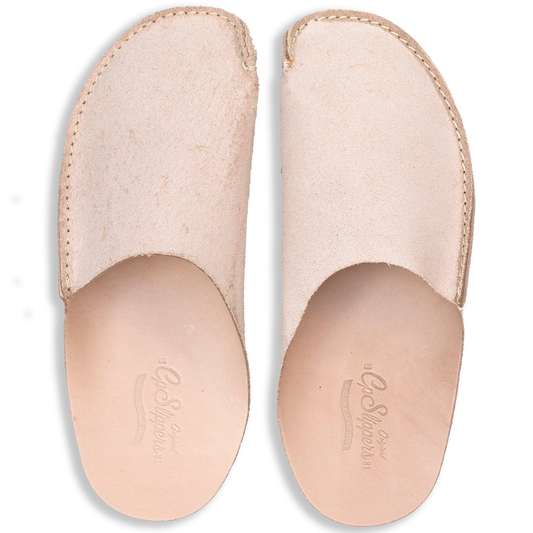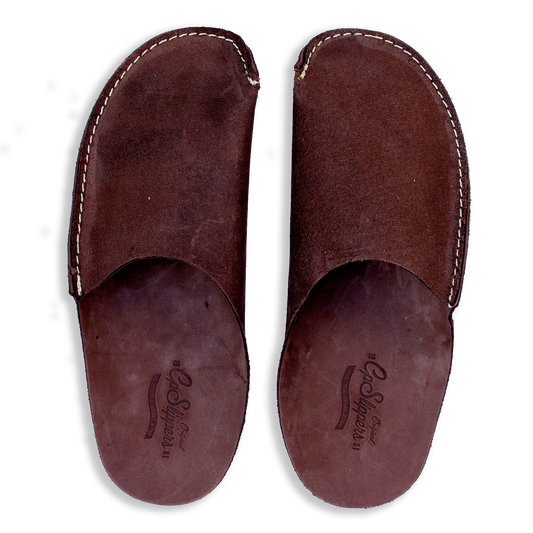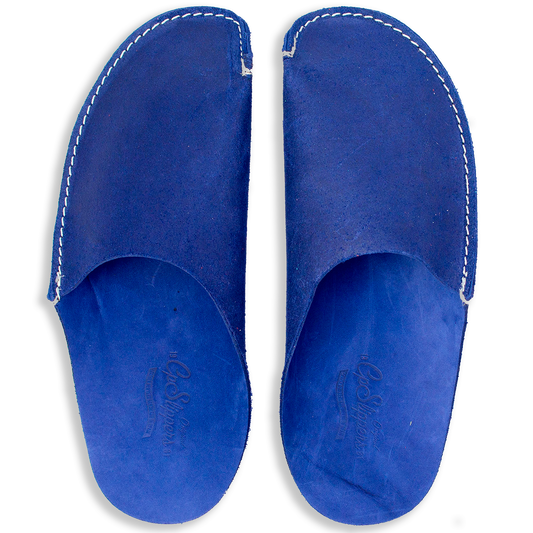
第6章:裸足で暮らせる家の設計
地面とのつながりを促す空間づくり。
地に足のついた生活を促す生活空間の創造
裸足で過ごす家は、靴を脱ぐ場所ではなく、その基礎から存在感、つながり、そして快適さを育みます。意図を持ってデザインし、質感、光、そして自然の要素を取り入れた環境を創り出すことで、身体を支え、心を落ち着かせるのです。
あなたが裸足で生活することにどれだけ熱心に取り組んでいるか、あるいは裸足で生活することの利点を探り始めたばかりであるかに関係なく、あなたの家はあなたの健康を促進する聖域になることができます。
裸足の家が重要な理由
生活環境は、私たちの気分、行動、そして世界における動きの感覚を決定づける役割を果たします。冷たく硬い人工床の上では、裸足で歩きたくなる気持ちは薄れます。しかし、床面が私たちにペースを落とし、触れ合うように促すと、私たちの姿勢は一変します。私たちは様々な動き方をし、様々な呼吸をするのです。
裸足に優しいデザインは、より意識的な動きを促し、足のメカニズムを改善し、より深い安らぎをもたらします。そして何より素晴らしいのは、そのエリアへのアプローチを慎重に変えるだけで済むことです。全面的な改修は必要ありません。
天然フローリング:素足体験の基盤
裸足で過ごす家にとって、床材は非常に重要です。自然素材は見た目が良いだけでなく、触り心地も良くなります。
- 木製の床は、暖かさ、わずかな柔軟性、そして足の筋肉を刺激する微妙な変化を提供します。
- 石やスレートは、地面に涼しさを与え、足元にしっかりとした安定感を与えます。
- 竹は滑らかで持続可能であり、その質感は素足で探検したくなるような魅力があります。
- 天然繊維のラグ(ウール、ジュート、コットン)は、触感を損なうことなく快適さと暖かさを加えます。
合成繊維のカーペット、プラスチック製の床材、あるいは氷のように冷たく、あるいはツルツルとした光沢のある仕上げは避けましょう。質感、温かみ、そして本物らしさ、地球そのものを映し出す素材を選びましょう。
屋外を室内に取り込む:生命、光、空気
ベアフットハウスは開放的で風通しの良い空間であるべきです。自然光と換気を最適化することで、雰囲気が向上し、よりダイナミックな空間が生まれます。
- 大きな窓や天窓から日光が差し込み、日当たりの良い場所で裸足でくつろぐことができます。
- 吹き抜ける風が新鮮な空気を招き入れ、肌だけでなく心も呼吸できるようになります。
- 室内の植物は単なる装飾ではありません。空気の質を高め、生命力、色彩、動きをもたらします。
小さな屋内庭園、水景、あるいはリビングウォールなどは、自然とのより親密な関係を築くのに役立つかもしれません。これらの自然の要素は感覚体験を豊かにし、裸足で歩く道を、シンプルなものから豊かで充実したものへと変化させます。
意図的な裸足ゾーンの作成
すべての部屋を裸足で過ごせる場所にする必要はありませんが、裸足で過ごせる場所を設けることで、家の中に新しいリズムが生まれます。
いくつかのアイデア:
- 柔らかい天然素材のテキスタイルと座布団を備えた読書コーナー。
- 石またはコルクの床で、邪魔が最小限に抑えられた瞑想スペース。
- 窓や植物コーナーの近くの、スクリーンのないエリア。伸びをしたり、座ったり、ただ過ごしたりできます。
裸足の習慣をサポートするさりげないヒントとしては、素敵なラグ、玄関に靴を入れる編み籠、リラックスできる柔らかくて暖かい照明などが考えられます。
これらの場所は、時間が経つにつれて、感情的にも肉体的にも自分自身を落ち着かせる聖域になります。
清潔で安全を保つ
裸足で暮らすための計画を立てるには、現実的な視点も必要です。本当に心安らぐ生活を送りたいなら、床は清潔で安全であるべきです。
- 滑りにくい表面と、ざらつきのないグリップを提供する仕上げを選択してください。
- 化学物質の残留を避けるために環境に優しい洗浄製品を使用してください。
- 玄関近くに靴収納を設置して、室内への汚れの拡散を防ぎましょう。
- 特に子供やペットを飼っている場合は、裸足に適したエリアで家を区画することを検討してください。
快適さと清潔さは相反するものではなく、むしろ同じ哲学の一部です。つまり、お客様がくつろぎ、心地よく過ごせる場所をデザインすることです。
接地された空間の感情的な影響
裸足に優しい家は、身体的な健康だけでなく、心の健康も育みます。冷たい石や温かい木の上で裸足で歩くと、どこか心地よさを感じます。それは、ペースを落とし、今この瞬間に意識を向け、一日の終わりをゆっくりと過ごすための、触覚的な呼びかけなのです。
これらの場所で私たちは地球だけでなく自分自身とも再出発します。
最後の考え:家を裸足の聖域にする
ベアフットハウスを建てるということは、流行や完璧さではなく、現実の生活のリズムを支える空間を創り出すことです。存在感を引き出し、動きやすさをサポートし、素材と流れを通してあなたの理想を象徴する空間です。
足元の床から始めれば、ワンルームマンションに住んでいても、大きな家に住んでいても、家は幸福感、美しさ、そして落ち着きが集まる場所になるかもしれません。

